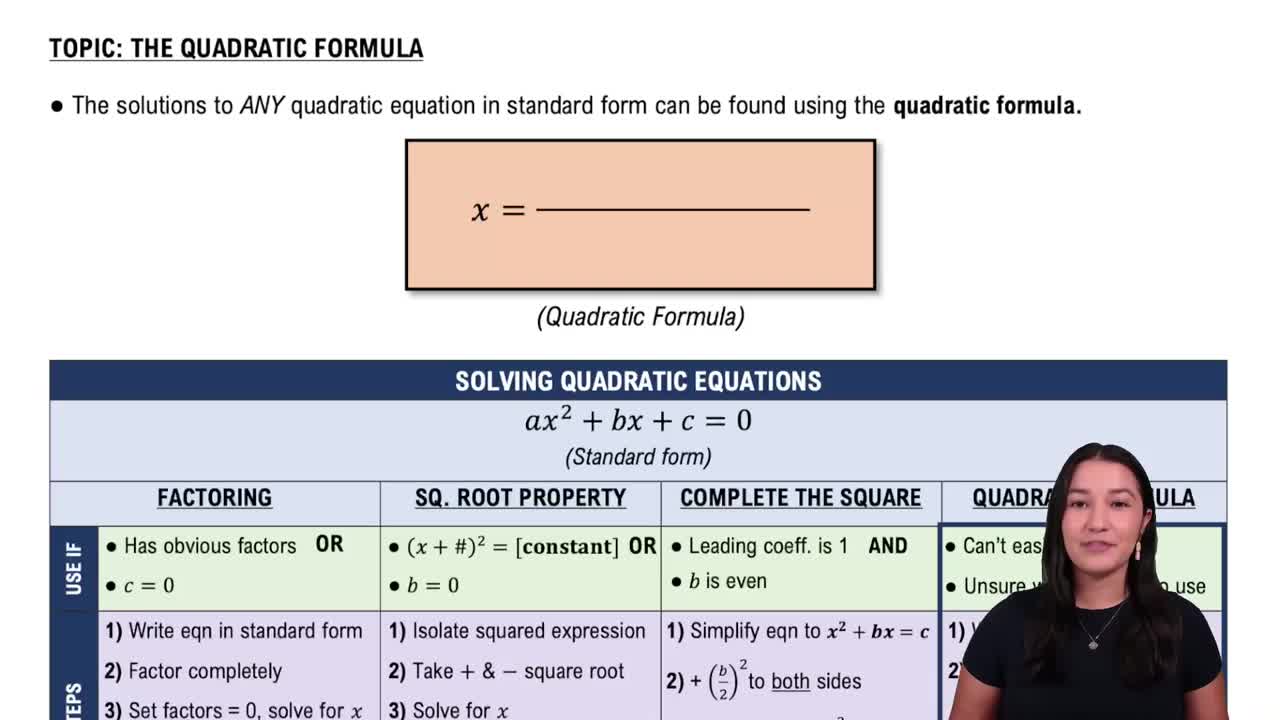Here are the essential concepts you must grasp in order to answer the question correctly.
Quadratic Functions
A quadratic function is a polynomial function of degree two, typically expressed in the form y = ax^2 + bx + c. The graph of a quadratic function is a parabola, which can open upwards or downwards depending on the sign of 'a'. Understanding the general shape and properties of parabolas is essential for analyzing their intercepts.
Recommended video:
Solving Quadratic Equations Using The Quadratic Formula
X-Intercepts
X-intercepts are the points where a graph crosses the x-axis, which occur when y = 0. To find x-intercepts for a quadratic function, one must solve the equation ax^2 + bx + c = 0. The nature and number of x-intercepts can be determined using the discriminant (b^2 - 4ac) from the quadratic formula.
Recommended video:
Discriminant
The discriminant is a component of the quadratic formula that helps determine the nature of the roots of a quadratic equation. It is calculated as b^2 - 4ac. If the discriminant is positive, there are two distinct real roots (x-intercepts); if it is zero, there is one real root (a repeated x-intercept); and if it is negative, there are no real roots, indicating the graph does not intersect the x-axis.
Recommended video:
 Verified step by step guidance
Verified step by step guidance Verified Solution
Verified Solution



 5:2m
5:2m